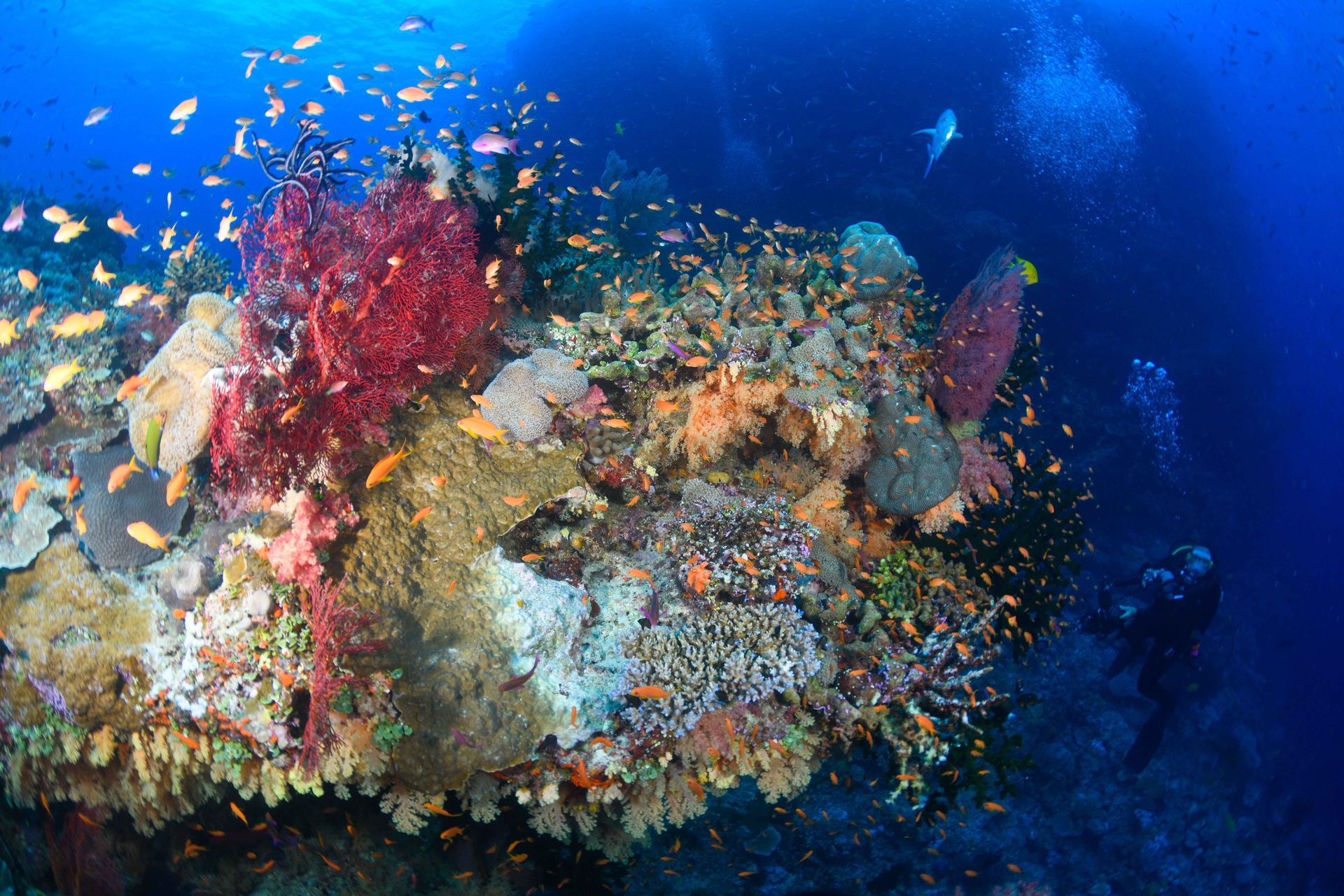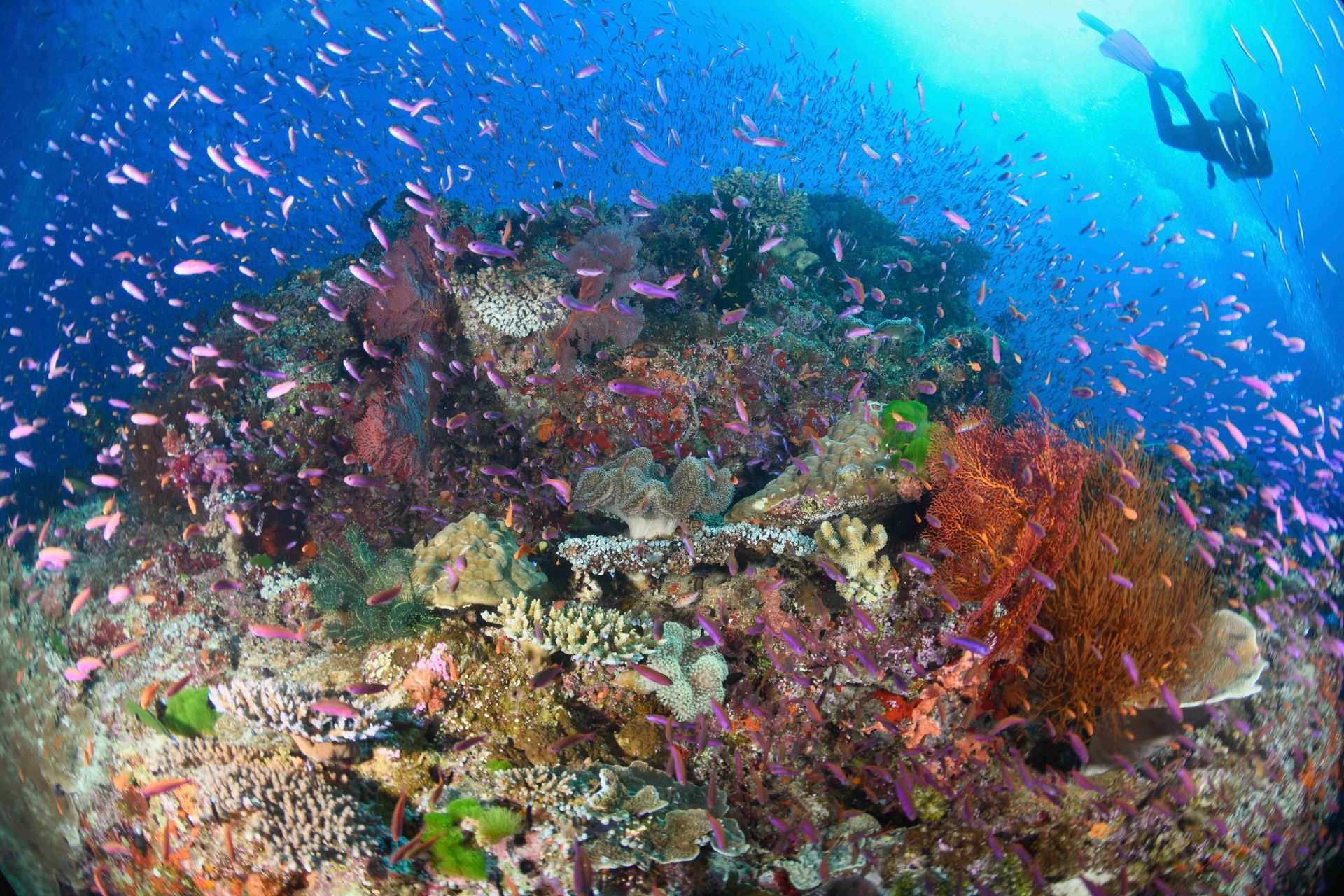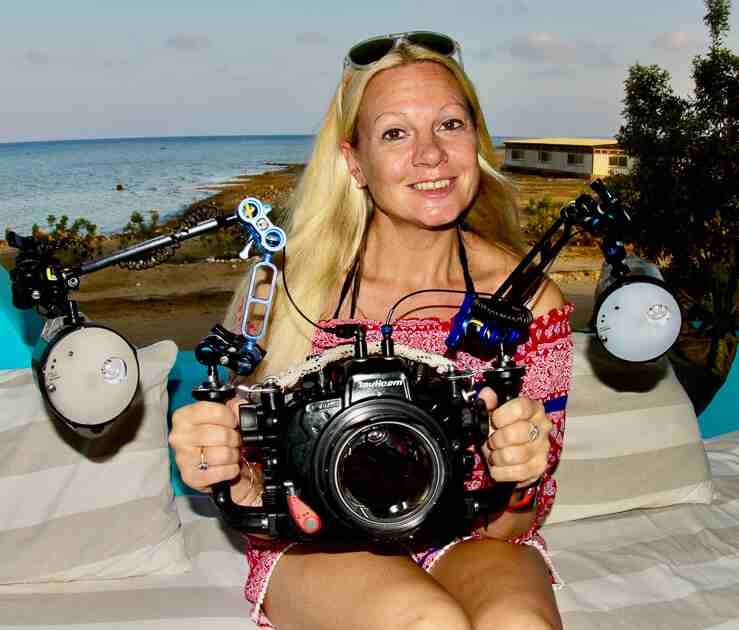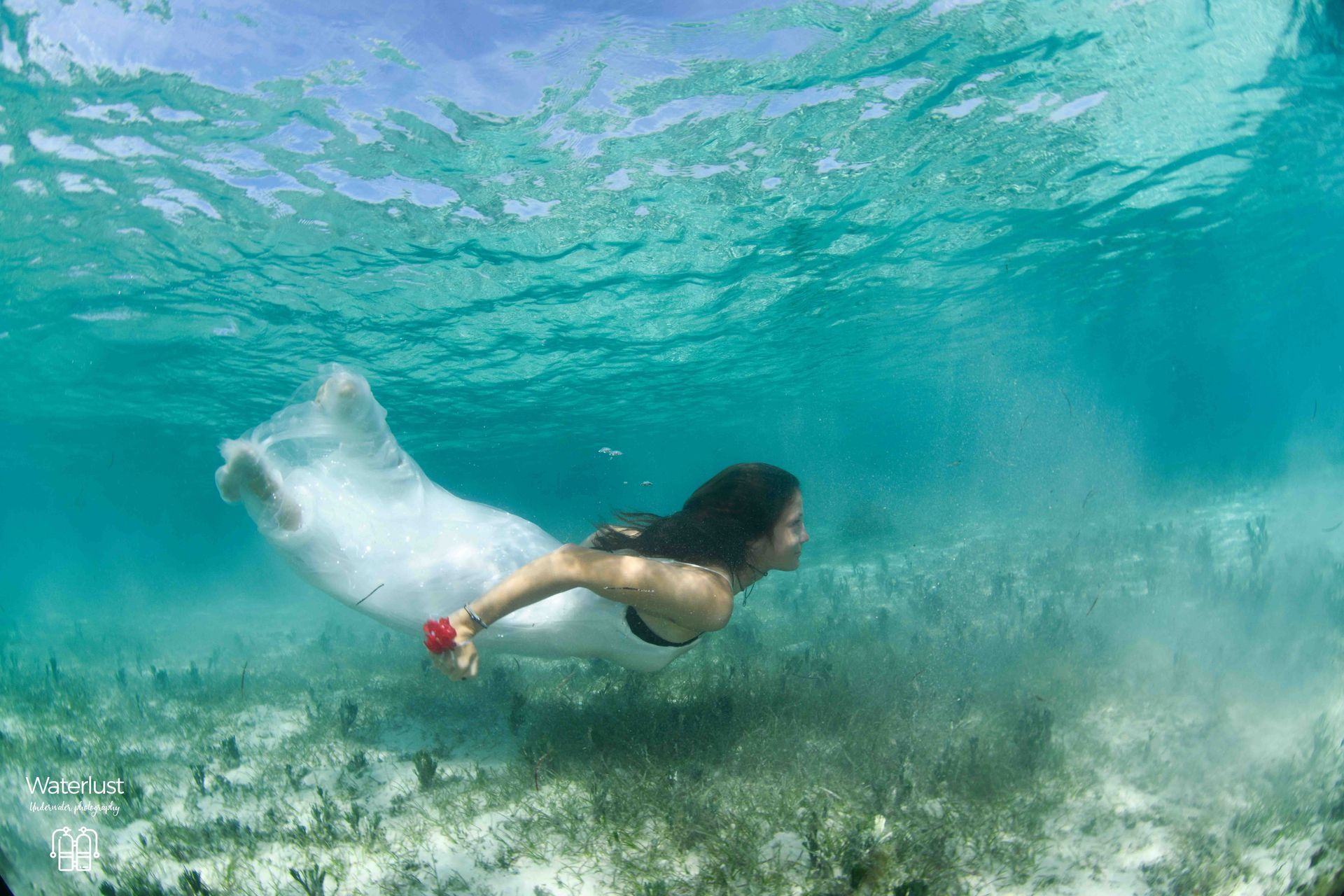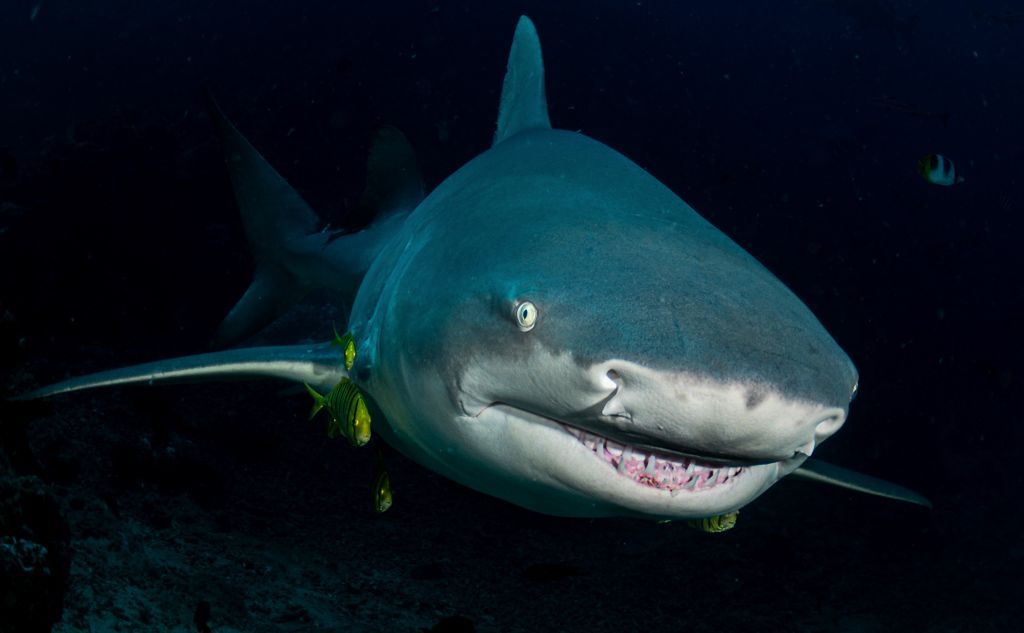Where is the best scuba diving in Fiji?
Waterlust Fiji spills the beans
Waterlust's ultimate guide to scuba diving in Fiji spills the beans on how to nab the very best scuba diving on Fiji's reefs......
In this series of monthly blog posts by Waterlust Fiji's award winning photographer and writer, we focus on frequently asked questions to diving in Fiji and our underwater biodiversity. In Part 1 we ask where are the best soft corals in Fiji. These sublime forests of swaying corals in every colour of the rainbow delight scuba divers visiting Fiji and have made Fiji world famous.
Diving in Fiji is a dream come true for many scuba enthusiasts. Fiji diving is world famous - crystal clear warm waters, vibrant coral reefs and abundant marine life delight thousands each year. We've got the 6th largest concentration of reef in the world with around 3.5% of all estimated coral covering a surface area of 10,000 square kilometres. The Fijian archipelago is formed of 332 volcanic islands formed during the late Eocene period. However, most importantly for the diver, Fiji is a remote volcanic island and dive package holidays in Fiji are not particularly cheap so you don't want to be disappointed.
Dreamy Dendronephthya
Where do I find the best soft corals in Fiji ?
Anyone who has just surfaced after a dive on Rainbow Reef's 'Great White Wall', Bligh Water's 'Mellow Yellow' or Namena Reserve's 'Grand Central Station' climbs reluctantly onto the steps of the dive boat devastated. Why did the scuba tank of air have to run out so soon?
It's our soft corals that make Fiji world famous. Our signature sites offer kaleidoscopic colonies of these suspension feeders, attached to the substrate and created by a community of tiny polyps conjoined by a a flexible scaffold. Soft corals are devoid of the zooxanthellae symbiotic algae that produces glucose from the sunlight in hard corals, instead soft corals, as sessile colonies, compete for areas of current vortex so the tiny polyps can grasp at zooplankton zooming along in the current.
In first place.......
Diving in Bligh Water
Yellow and peach coloured Dendronephthya soft corals have dominated this coral stack in Bligh Water. Our finest sites are often dominated by Dendronephthya and peppered with sporadic green sun corals, sea fans and whips. The surface of bommies like this are usually characterised by hard coral colonies and zooxanthellae symbiotic softs such as leather and mushroom corals, locked in their eternal battle for sunshine for their partner algae, the zooxanthellae.
Dendronephthya is able to colonise walls, overhangs, swim throughs and bommies as a result of its speedy reproductive method. The coral polyps are 'gonochoric' (either male or female), and able to 'brood' the next generation of polyps internally. These big colonies result from the offspring can be released locally, without the free floating planula (plankton) stage and can settle instantly onto the reef next to the parents. Many other soft corals are broadcast spawners, like hard corals. Broadcast spawners intermittently release eggs & sperm from their gametes into the water column with fertilisation and development taking place at the surface. Consequently their offspring is likely to land further away.
It is the enormity of the Dendronephthya colonies. that delights us. A huge floral seascape, that expands and contracts on tide timing and the consequent current flow is a dive second to none. So where can you find this majesty ? Before diving (no pun intended) into our favourite soft coral drift dives of Fiji it must be added that things in Fiji change - our waters are warming like the rest of the world and we suffer from cyclones, which are increasing in ferocity. Soft corals, are more resilient to heat pooling than their hard coral relatives, but far less resistant to the storm surges and wave action a category 5 cyclone can unleash.
Bountiful Bligh
The body of water located between the two largest Fijian islands, Viti Levu (small island) and Vanua Levu (large island) is named after Captain William Bligh, Vice-admiral of the Blue, who was sent in 1787 to Taihiti to obtain breadfuit trees as the British government wanted to test whether this food stuff would be a successful crop to feed enslaved Africans on British colonial plantations in the West Indies. He sailed through Fiji after leaving Tahiti encumbered with breadfruit plants and before the mutiny on the HMS Bounty (the vessel under his command) on the way to Australia. . Bligh water, should perhaps be renamed, 'fast moving' water in Fijian. The strong currents created by the funnelling and the deep volcanic channels from the eruption that separated the two land masses in the Eocene period, are the factors that underpin the quality of the diving in the 2020s, today. Bligh has two marine reserves of note - Vatu - i - ra conservation area and Namena to the north east of Vatu.
The strong currents bring nutrient-rich passages from the deeper ocean, supporting a thriving ecosystem of corals, fish and other reef inhabitants and entice pelagics looking for food. Divers can expect soft coral bommies thronged with lyre tail anthias, magenta slender anthias who live their lives in large schools darting in and out of the protective Dendronepythya colonies.
Turtles, large fusillier schools, reef sharks, dolphins, hammerhead schools and pilot whales are also common in Bligh Water. The hard corals are also in perfect shape and the viz is second to none. If there is a downside to Bligh diving its that it is far from land - both Namena Reserve and Vatu - I - Ra are 40 minutes to an hour from Savusavu and Rakiraki respectively. In winter, where Fiji's prevailing winds are South Easterly trades, the sea is rough meaning it can a challenge for seasickness and gearing up in the swell. Of course the currents are strong too and we've faced quite a few 'hold on to your dive mask and reg' moments on safety stops. Having said that - Bligh has the wow!
Second Place....
Diving on Rainbow Reef
Rainbow Reef is a jagged channel to the east of Vanua Levu and north west of Taveuni Island. It is home to the world famous, Great White Wall, where a sheer vertical rock face has been bejewelled by an enormous colony of white Dendronehpthya. These coral 'bushes' appear a beautiful lilac in the blues of the water column. The dive commences as you descend in single file down a steep swim through at 15 metres. The dark funnel is filled with nocturnal big eye soldierfish , who are red! (the hardest colour to see underwater which protects them from predators). Emerging at 23 metres into a 'vestibule' are of large red gorgonian fans, purple whips, tangerine Pinnigorgia flava all decorated with crinoids grabbing a meal in the passing current. Then the flight along the wall commences!
White Dendronephthya is the signature coral of Rainbow reef with these corals featuring on Jerry's Jelly dive site, Annies Bommies and quite a number of areas far away from the White Wall as the spawn has travelled in currents. Purples and a yellow area of the same coral exist on Rainbow Reef (see Jerry's Jelly dive site below where a range of soft corals in pinks, yellows as well as sea whips have taken up refuge in areas not dominated by the white colonies.
When diving Rainbow Reef a careful orchestration of the currents is required. Choosing a resort with a dive operation which does this can provide superior quality diving. Dendronephthya 8 armed polyp corallites contract themselves into a pulpy root and sea whips and fans also 'flatpack' themselves when not feeding.. This makes for a boring dive. Check your resorts dive team go out and dive these sites when the current is optimal - not so strong you get washed out to sea but when the corals are still in bloom and the fish are partying in the food conveyor belt...
Happy diving !
Alison
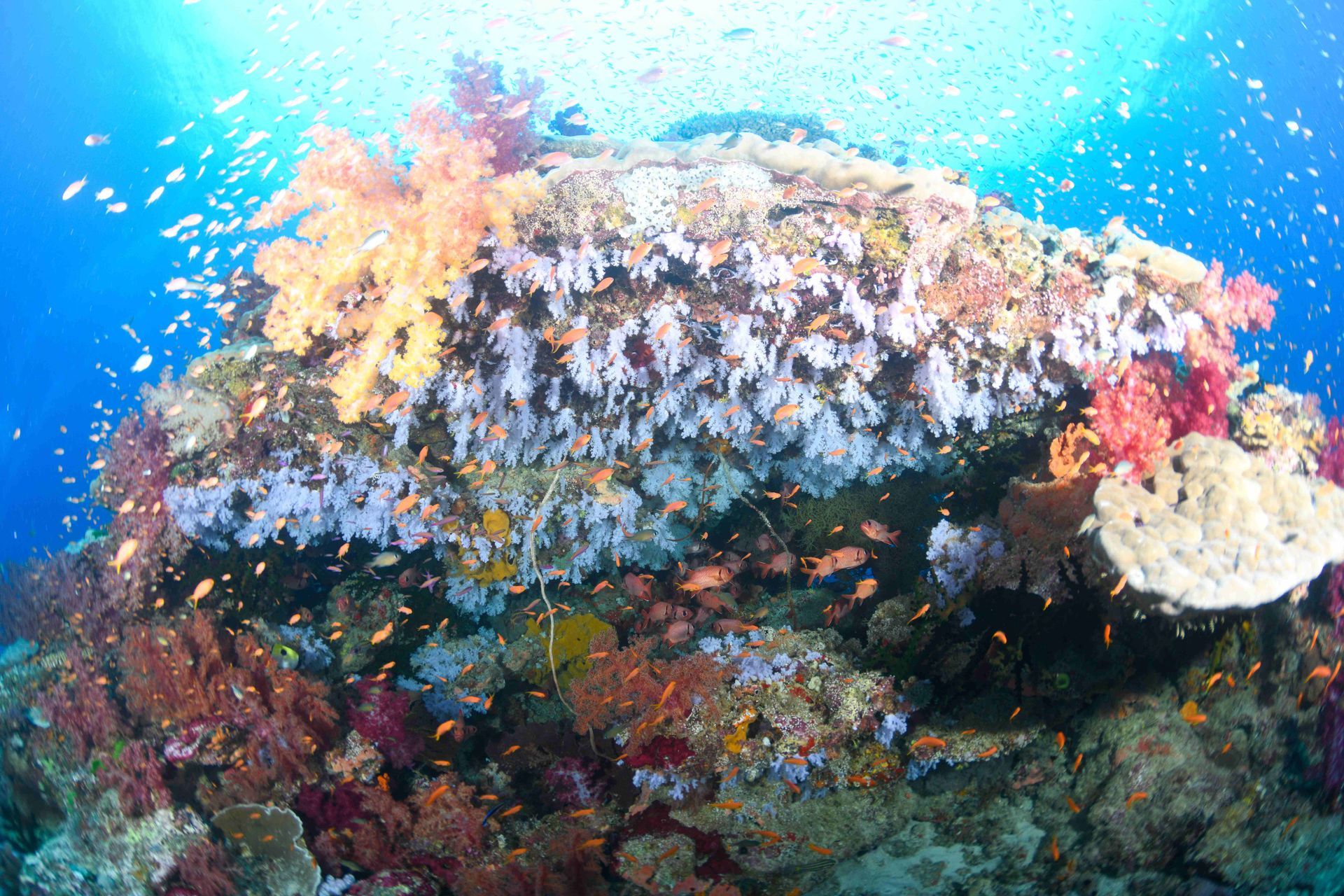
Alison Smith arranges underwater photography special dive trips to Fiji and workshops for photographers wishing to improve their skills. She offers camera hire in Fiji as well and also provides underwater wedding, honeymoon and engagement photography. She is the writer of the 2021 178 hard backed souvenir book. 'Blue Bubbles - Underwater Fiji' which is sold around the country.
'Blue Bubbles - Underwater Fiji'
https://www.scubadivermag.com/first-underwater-photography-school-in-fiji/
CONTACT WATERLUST
We will get back to you as soon as possible.
Please try again later.
Powered by www.designhive.online/

